What Do I Put Under Artificial Grass? Step-By-Step Guide
-

- Last updated:
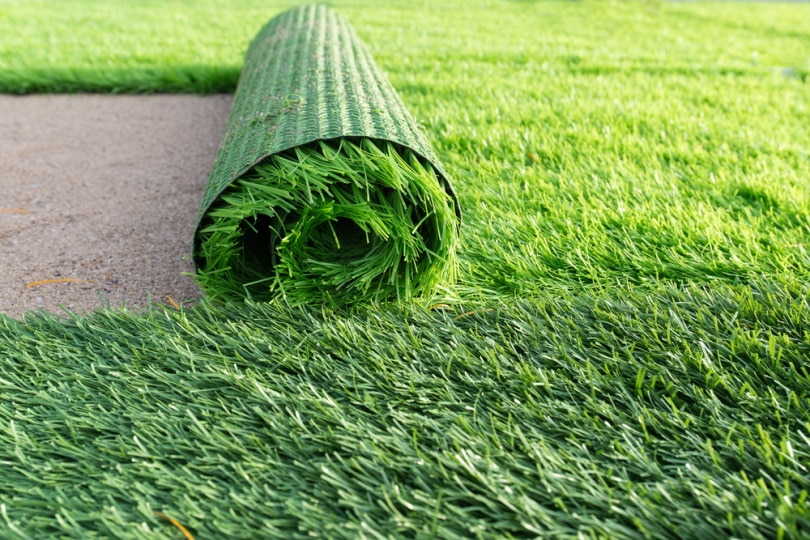
Artificial grass is a great way to get an amazing lawn that will last for years without using lots of water. But what do you need to do before installing artificial grass?
An important step is putting down a sub-base. This is what goes on the ground, and then the artificial grass on top. Installing a sub-base is crucial in dealing with the natural expansion and contraction of the soil.
This article expounds more on the importance of installing a sub-base under artificial grass. Also, get to know how to install artificial grass properly in your home or property.
Brief History of Artificial Grass
The Astro Dome was the first place to have artificial grass installed in 1966. This is why it’s known as Astroturf. However, the concept of artificial grass has changed a lot since then. Many people are embracing artificial grass as a better option for their lawns.
Artificial grass is a better alternative since it won’t require much tending to after installation. When dealing with real grass, you have to water and fertilize on a regular basis to keep it healthy. Artificial grass won’t need fertilizer or water, and you can enjoy it for close to 20 years.
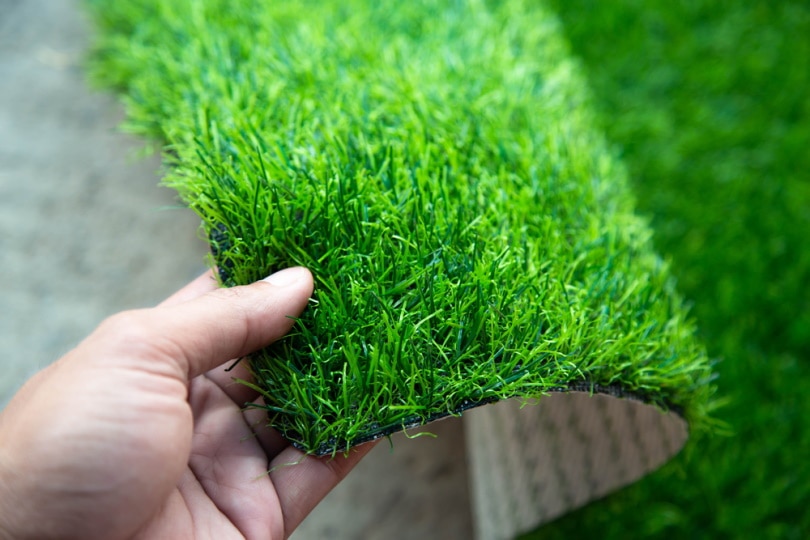
Sub-Base for Artificial Grass
You have to put down a sub-base before adding the grass on top of it. Properly put down base can serve you for the entire duration of the artificial grass. You can even remove one installation and add another on the same sub-base.
There are several types of sub-base that you can use during an artificial grass installation including:
DG (Decomposed Granite)
This is basic granite rock that fractures into smaller pieces due to weathering. This happens because of the presence of weak rocks, silt particles of clay, sand, and gravel. However, it’s a costly option for a sub-base.
CMB (Crushed Miscellaneous Base)
Many landscapers prefer to use CMB because it’s affordable and simple to compact. A blend of recycled concrete and asphalt together with a sand-gravel mixture makes CMB.
Class 2 Road Base
While CMB is an affordable sub-base option for artificial grass installation, a more expensive version is Class 2 Road Base. The additional cost is because of the string testing that this sub-base must undergo.
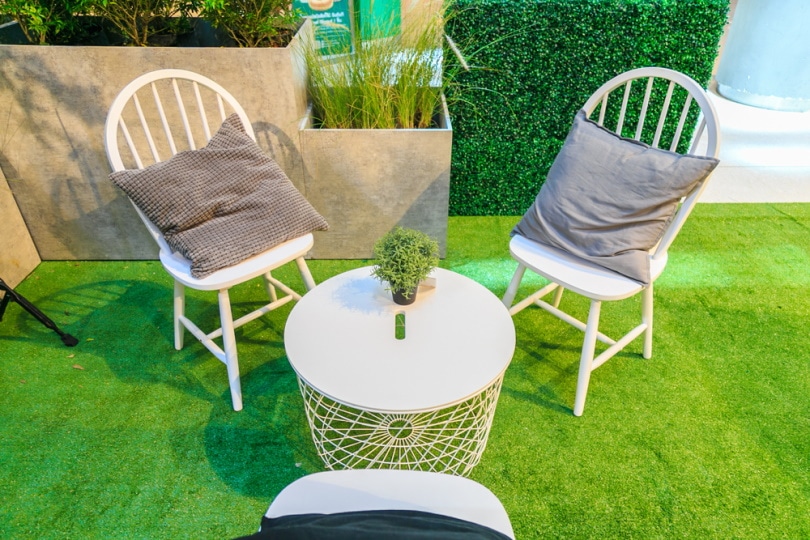
Can I Lay Artificial Grass on Dirt?
No, you should never lay artificial grass on dirt or even natural grass. It’s best to remove natural grass and add a sub-base before installing the artificial grass.
While it is possible to lay artificial grass on bare soil, you run the risk of unevenness when grass begins to grow. Removing natural grass and organic matter from the ground clears what you can see. However, roots and seeds remain on the soil and soon begin to germinate when there’s presence of moisture.
After some time, you start to notice some parts of the artificial grass are uneven. However, when you add a sub-base before the installation process, it prevents grass and weeds from growing. This leaves your artificial grass even for the entire duration you’ll have it.
Also, note that growing grass won’t remain underneath the turf. You’ll start to notice blades poking out of the artificial grass after some time. This, plus the presence of moisture, will cause damage to your artificial grass lawn.
Can I Use Sharp Sand Under Artificial Grass?
Sharp sand is readily available and seems like a good option for laying underneath artificial grass. However, its affordability and availability shouldn’t lure you in because it’s not the best option.
At the start of artificial grass installation in many homes, sharp sand was a popular sub-base. However, today this isn’t the best sub-base to use. Those who recommend it are only after cutting costs for artificial grass installation.
Several issues arise with the use of sand as a sub-base. For instance, when you use sand, after some time, you might need to add more. Artificial grass contains some drainage holes that permit water to drain through to the base underneath.
With time, the draining water will wash away the sand since it’s not too solid. That’s when you start to notice some parts of the lawn are uneven.
In addition, sand isn’t solid, meaning it will move around when there’s foot traffic on the lawn. Sand doesn’t hold firm and will move around when you walk on the artificial grass. A lack of a solid base underneath also results in unevenness.
Can I Install Artificial Grass Over Concrete?
Artificial grass is a great way to have a green lawn on almost all surfaces, even concrete. This is why you find it even in fitness centers or buildings with concrete floors. It’s a great form of carpeting that works well on such a hard surface to provide maximum comfort.
All you need to do is determine how much artificial grass you need for a specific area. After that, you can cut, shape, and contour it to fit this space. There’s no limit to using artificial grass on hard surfaces like concrete since you can get huge or tiny pieces depending on your needs.
While artificial grass is great to use on concrete floors, it’s worth noting that it won’t offer any padding. Therefore, if you place it in a playroom, additional padding is necessary. This will keep the children safe from injuries when they land on the floor while playing and jumping.
Also, it’s important to clean the floor before installing artificial grass over concrete. If the area gets wet, find out the best drainage setup for it. This prevents water from collecting underneath, which may damage the artificial grass and concrete.
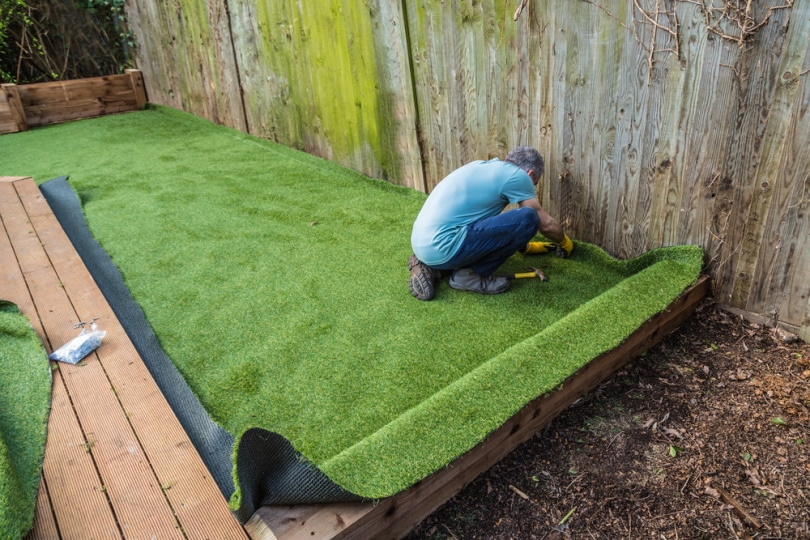
Do I Need Drainage Under Artificial Grass?
Determining the drainage for artificial grass is a crucial step in the installation process. Remember, rain and other sources of moisture can bring water to the turf. While this isn’t preventable, you’ve to find a way to drain the water; otherwise, it will damage the artificial grass.
Drainage installation happens beneath the artificial grass to prevent the effects of flooding. The best drainage for turf is a compacted aggregate base layer. It provides the artificial grass with the best drainage for a long time.
How to Install Artificial Grass (8 Steps)
The process of installing artificial grass follows several crucial steps. The bulk of the work involves ground preparations before adding the turf. Here is the simplified procedure.
1. Ground Inspection
Before any artificial grass installation, a ground inspection is crucial. This is when you get to determine if there are any pipes or wiring underneath. These can be hazardous and it’s best to note their position. That way, you can find ways to drain water from the area to prevent any problems in the future.
2. Remove All Organic Matter
After noting where pipes and wires are on the ground, start to clear it. Artificial grass looks better when on even ground with no organic matter. So, start by clearing all the grass and weeds from the ground before adding the sub-base.
Instead of removing the plants one by one, you can make work easier by spraying a herbicide. This will kill all the organic matter, but you must give it enough time to work. Get the version that kills weeds and inspect the site before proceeding.
3. Dig the Ground
After getting rid of organic matter, dig the ground to remove about 3 inches of topsoil from the location where you want to lay the turf.
Use a digger that can even out the ground. After extracting the soil, use a hand tamper to compact the loose soil left on the ground.
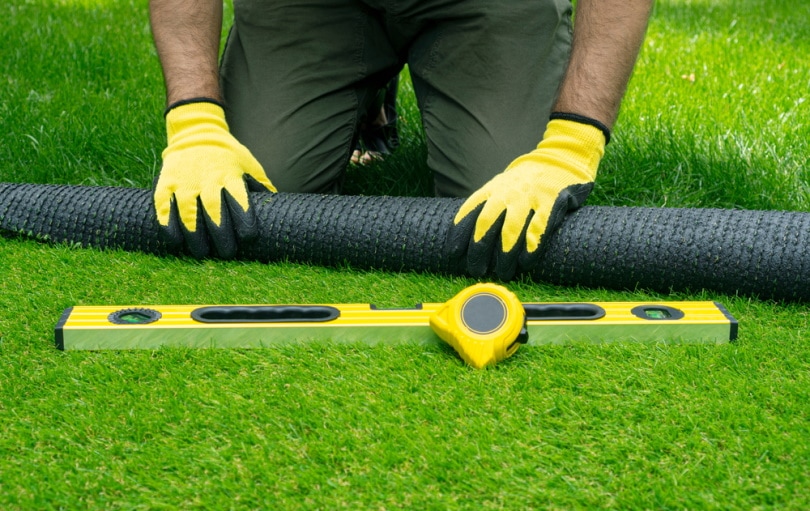
4. Install an Efficient Drainage System
Poor drainage will ruin your artificial grass, so before taking another step, plan your drainage. Determine how water will drain from the area to prevent stagnation, which is hazardous. You can also leave drainage gaps around the perimeter of the artificial grass for better results.
5. Install a Bender Board and Gopher Wire
Start by mapping out the area where the artificial grass will go. It’s best to do so by installing a bender board, which works as a temporary guide. After that, you can lay down the gopher wire bit by bit.
With each section of the gopher wire you lay down, add a U-shaped staple to hold it in place. Once you cover the entire area, cut the excess.
6. Add a Geo-Textile Layer
A geo-textile layer goes before the sub-base, but on top of the gopher wire. Roll out the cloth to cover the entire area and use clips to hold the cloth in place. Use some scissors to cut the excess before proceeding to the next step.
7. Pour the Sub-Base
Gather the sub-base material you want to use to lay the artificial grass. Pour it over the geo-textile material and level it using a shovel. Apart from leveling, you have to work on compacting the sub-base to even out the ground.
The best item to use is a plate-compactor or tamper. Bring the base down to 90% of the original ground level before adding the artificial grass.
8. Laying Down the Artificial Grass
Work on leveling the ground as much as possible. Check all areas for unevenness and correct it. After that, you can lay down the artificial grass. Inspect the grass for any unevenness and correct it before completing the installation process.
Conclusion
Artificial grass is quite versatile and reliable. You can use it indoors and outdoors to create the perfect carpeting or lawn depending on your needs. When installing it outside, you need a sub-base to maintain the good quality of the artificial grass.
There are some excellent types of sub-base like DG and CMB. However, you shouldn’t use sharp sand as a sub-base since it washes away and causes unevenness. During installation, work on drainage. This way your grass will serve you to the maximum of its lifespan.
Featured Image Credit: red mango, Shutterstock
Contents

